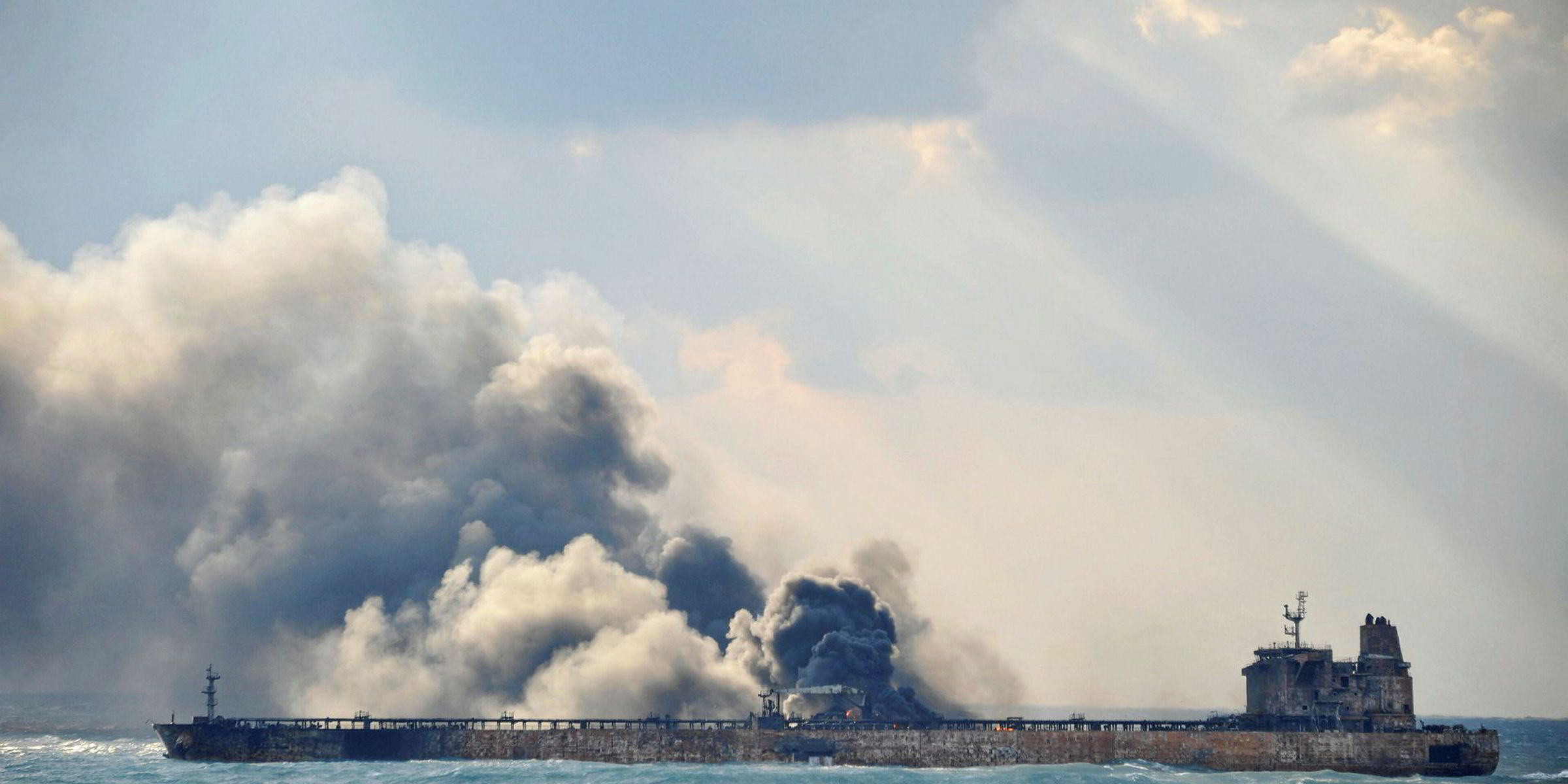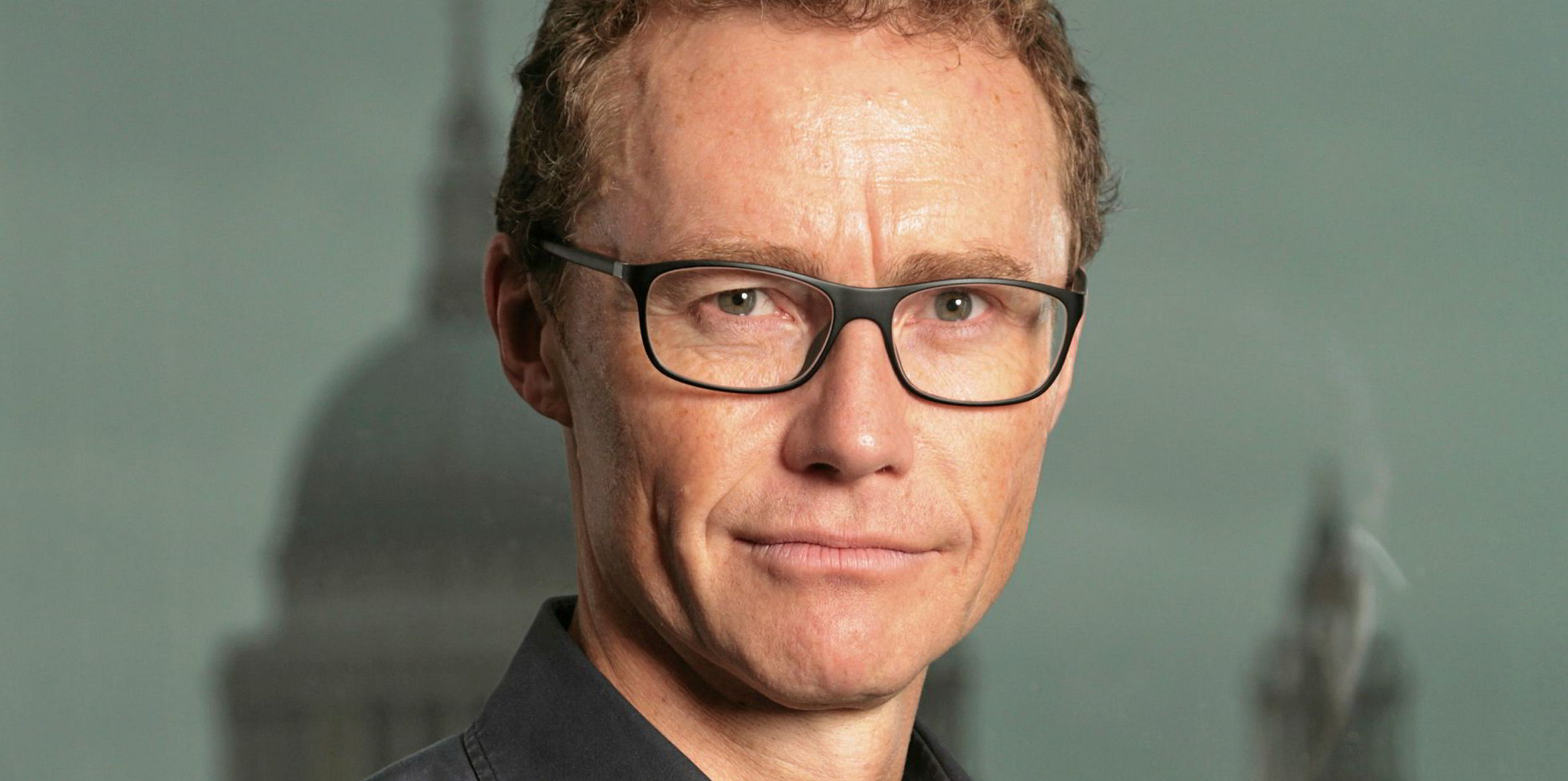Shipping has a very short memory when it comes to issues it would rather forget.
Just four months on, it would be easy for an observer not to recall that this year has seen one of the most horrific shipping accidents of recent times and the worst oil tanker spill in over three decades.
It was on 6 January when the 164,000-dwt Sanchi (built 2008) and the 76,000-dwt bulker CF Crystal (built 2011) collided off the coast of China near the mouth of the Yangtze.
The Iranian-owned suezmax was laden with nearly one million barrels of ultralight crude. It burst into flames and the entire vessel immolated. After drifting east, it finally sank on 14 January.
None of the crew of 30 Iranians and two Bangladeshis onboard the Panama-registered tanker were rescued and all are now presumed dead.
Little of the oil was recovered, resulting in the worst maritime oil spill in 35 years, according the International Tanker Owners Pollution Federation.
The Chinese-owned bulker, which was registered in Hong Kong, escaped comparatively unscathed.
Under the circumstances it should not come as a surprise, perhaps, to hear of diverging conclusions over the causes of the accident among members of the committee established to investigate.
According to Iranian state media, the Chinese and Hong Kong representatives on the committee believe both vessels were to blame, while those from Iran, Panama and Bangladesh argue a turn to the right by the CF Crystal caused the collision.

It now appears likely the arguments will end in court, not least due to the estimated $195m insurance bill.
So in the context of this accident, it is instructive to learn that deficiencies in the safety of navigation remain at alarmingly high levels in the region.
Problems with passage plans, navigational and signal lights, and recognition of remote audible alarms were among the most notable deficiencies found in the concentrated inspection campaign held in the region between September and November last year by members of the Tokyo MOU on Port State Control.
It is instructive to learn that deficiencies in the safety of navigation remain at alarmingly high levels in the region
Of the total number of deficiencies found onboard vessels by port state control inspectors from countries in the Asia-Pacific region, over 20% related to passage plans and nearly 20% to navigational and signal lights.
This is of particular concern for a region that is seeing robust growth in shipping activity with increased traffic along key corridors and around major port hubs.
Thankfully, the overall regulatory compliance standards in the region are improving, according to the Tokyo MOU’s recently published annual report.
The 941 ship detentions made in 2017, out of the 24,939 vessels estimated to be trading in the region, marks the sixth straight annual fall, and the ninth successive decline in the percentage of ships detained.
The number of detentions is the lowest ever and the first time it has been less than 1,000 in two decades, according to the Tokyo MOU’s chairman Carlos Fanta and secretary Hideo Kubota in the report.
However, the average number of detainable deficiencies per detention has been increasing for three years, for which they have a disturbing conclusion.
“This may be interpreted as a trend that conditions of some substandard ships are becoming worse,” they state.
Further, it beggars belief that alongside deficiencies in safety of navigation, problems with lifeboats, life-saving appliances and fire safety measures remain the top-three deficiencies found on ships inspected in the region last year.
If the Sanchi tragedy teaches the industry a lesson, it is that preservation of human life must have a higher priority.



